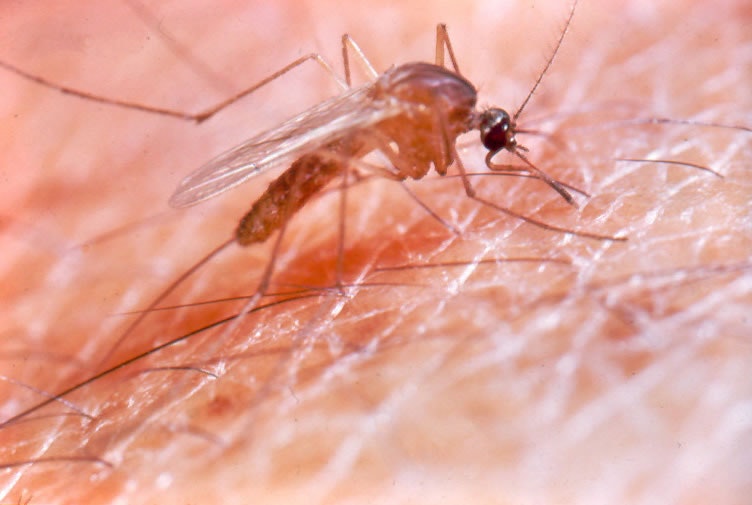Little House Mosquito (Culex pipiens)*

This mosquito is generally an urban problem. They can be found all year and breed in storm drains, catch basins, utility vaults, septic tanks, flooded basements, sumps, and in just about any water container found near human habitation. Adults readily enter homes and bite at night. It can take many hours to locate the breeding site for this mosquito due to the wide variety and types of habitats that it utilizes.
The Little House Mosquito (Culex pipiens pipiens and Culex pipiens quinquefasciatus) is one of 53 types of mosquitoes that occur in California. The Little House Mosquito is found in most California counties. Culex pipiens pipiens is known as the Northern House Mosquito while Culex pipiens quinquefasciatusis known as the Southern House Mosquito.
These two subspecies, although distinct, will be treated here as one. They are commonly called Little House Mosquitoes because of their close relationship with man’s environment and their habit of entering into houses and sometimes even breeding in containers indoors.
The Little House Mosquito is a light brown, medium-sized mosquito with a blunt-tipped abdomen. There are narrow white bands on the abdominal segments but none on the legs or proboscis (beak). Males resemble the females except they have bushy antennae and long palpi on their heads and claspers at the tip of their abdomen.
This is the most widely-distributed mosquito species in the world. They are widespread throughout the United States and California.
Diseases Transmitted
The Little House Mosquito is a domestic nuisance, but may affect industrial and agricultural production in certain situations. In other areas of this country they are known to be vectors of St. Louis Encephalitis. They can also transmit the organisms causing bird malaria, fowl pox, and Dog Heartworm. They also serve as vectors of filariasis in tropical areas of the world. This mosquito is also an excellent vector of West Nile Virus, a rapidly spreading disease introduced into the United States in 1999.
Life Cycle
Little House Mosquitoes have four life stages: egg, larva, pupa, and adult. The immature stages need standing water to complete their life cycle.
After an adult female lays her eggs they hatch into larvae (wrigglers) which feed on small organic particles and micro-organisms in the water. Feeding occurs when they hang from the water’s surface by the tip of their tail (siphon) or by browsing along the bottom of their habitat. Because they are air breathing organisms they must return to the water’s surface to breathe. About four to six days are required for larval development. At the end of the larval stage, the mosquito molts and becomes the aquatic pupa (tumbler). The pupa is active only if disturbed, for this is the resting stage where the larval form is transformed into the adult. This takes about two days during which time feeding does not occur. When the transformation is completed, the new adult splits the pupal skin and emerges. Under optimum conditions, development from egg to adult takes about a week. However, all mosquito developmental times are dependent on the temperature and nutrients of the water in which they mature.
Adult Daily Activity
These mosquitoes may live for two or three weeks in the summer, but under cooler conditions the females may live for several months. In areas of moderate climate, larvae may be found in every month of the year, but in areas with cold winters this species usually passes the winter as hibernating females in protected natural or artificial shelters such as cellars, outbuildings, wood piles, caves, culverts, etc. Where large populations exist, male swarming flights may be observed around twilight. Mating may take place in conjunction with the male swarms.
Adult Flight Range
Although small numbers of these mosquitoes tend to remain in a localized area, (a block or two), large populations, from breeding sites such as waste water ponds, may lead to infestations affecting a few square miles.
Adult Feeding
Female house mosquitoes readily bite humans, but birds and other mammals are considered the primary hosts. This species bites under low light intensity or in the dark, tending to seek entry to homes and resting in darkened areas when the light is bright. Children and babies are most susceptible, often covered with numbers of reddened marks for many days following the biting period. To adult humans, their humming at night is an added irritant to the bite and sleepless night. Males feed on nectar and plant juices. Females may also feed on plant juices, but usually must have a blood meal in order to develop their eggs.
Eggs and Larvae
An adult female lays about 150-200 eggs in clusters called rafts, which float on the surface of the water until they hatch in about one to two days. The female usually prefers laying eggs in standing, somewhat polluted water such as sewage, street drainage, septic tanks and cesspools, industrial wastes, and such backyard sources as unused swimming pools, fouled ornamental ponds, cooler drain-water, and water in containers. A wide variety of other water sources may also be infested with the aquatic stages of this common mosquito.
